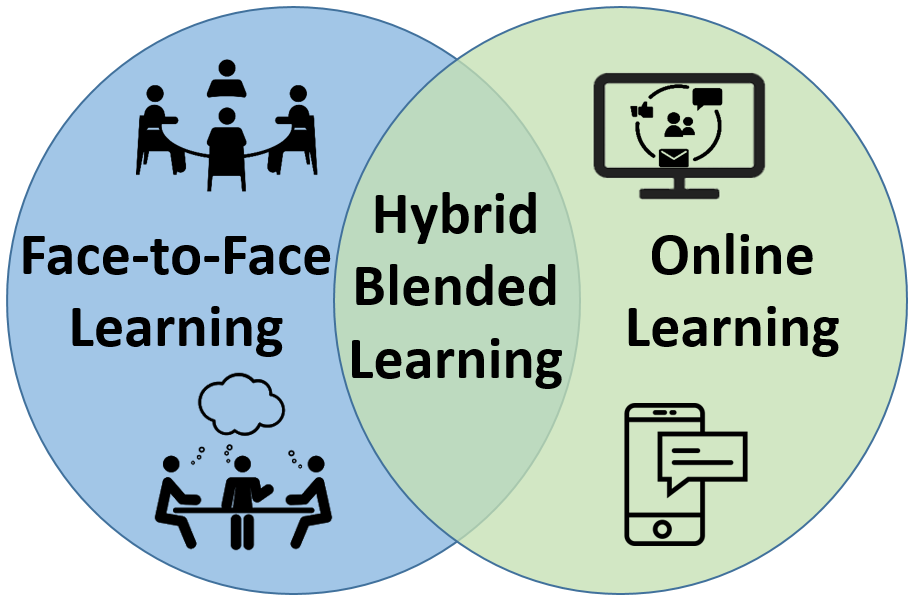- Development Opportunities
-
Excellence in
Online Instruction - Instructional Design
-
Faculty Resources
- New Faculty Essentials
- The FDIP Podcast
- Active Learning in Action
- AI Resources
- AI & Academic Integrity Guidance
- Syllabus Statements
- Infographic Project
- Assessment Strategies
- Faculty Support and Wellbeing
- Student Support and Services @ EIU
- Faculty Online Resources
- FDIC Kaltura Video Gallery
- Faculty & Staff Diversity Plan
- Guidance on Respondus and Academic Integrity
- Funding Sources
-
Instructional Technologies
- Digital Accessibility Remediation Request
- Overview
- D2L Brightspace
- Kaltura
- Microsoft Teams
- Office 365
- Adobe Creative Cloud
- Qualtrics
- Respondus
- Turnitin
- Zoom
- CSI Active Learning Classroom Reservations
- Privacy Statements for Instructional Technologies
- Accessibility Statements for Instructional Technologies
- Accessibility Resources for Digital Materials
- About Us
Help with Hybrid or Blended Courses
 Hybrid/Blended teaching moves the role of the faculty towards “guide on side” and the role of the student towards “active learning.” Active learning requires student engagement and responsibility in their learning process and faculty preparation in their course design.
Hybrid/Blended teaching moves the role of the faculty towards “guide on side” and the role of the student towards “active learning.” Active learning requires student engagement and responsibility in their learning process and faculty preparation in their course design.
As stated by Garrison and Kanuka (2004), “Blended [hybrid] learning inherently is about rethinking and redesigning the teaching and learning relationship. To paraphrase Marshall McLuhan, it is not enough to deliver old content in a new medium“. 1
The instructor decides the learning environment activity to meet the various student learning styles for acquiring course concepts in a more in-depth approach2,3. Class time is devoted towards collaborative projects and authentic learning activities and to address misunderstandings and/or questions regarding content/projects2,3. Out of class time is focused on reviewing one or more of the following:
- recorded lectures
- readings
- demonstrations
- illustrations
Hybrid/Blended courses require a mix of online and traditional classroom activities where the instructor determines what activities are completed online and in the traditional classroom for students to attain knowledge transfer.2,3
Resources for designing Hybrid-Blended Courses:
Archived Webinar: Understanding Blended Learning
Why Blended (Learning), Why Now?
Six Benefits of Hybrid Courses
Hybrid Learning Benefits – Hybrid Learning Challenges
Blended Learning: Integrating Online and Face-to-Face Courses
Designing and Teaching Hybrid Courses
Blended Learning Course Integration Templates
Best Practices for Use of Blended Learning (Research: Student Perspective)
Best Practices for Designing Blended Courses
Blended Learning Models and Best Practices from Blended
Additional References for Hybrid Learning and Teaching
References
1 Garrison, D. Randy, and Heather Kanuka. “Blended learning: Uncovering its transformative potential in higher education.” The internet and higher education 7.2 (2004): 95-105.
2, 3 Ionas, Ioan, Matthew Easter, William Miller, and Gayla Neumeyer. “Using Open-Source Tools to Design and Develop the Online Component of a Blended-Learning, Instructor-led Course,.” International Journal of Designs for Learning 3.1 (2012): 12-26. http://scholarworks.iu.edu/journals/index.php/ijdl/index. Web. 14 Nov. 2012.


